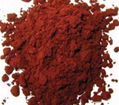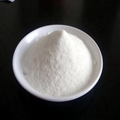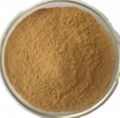| Model: | - |
|---|---|
| Brand: | - |
| Origin: | Made In China |
| Category: | Agriculture & Foods / Agricultural Products & Resources / Plant Extract |
| Label: | mulberry leaf extrac , mulberry chlorophyl , mulberry dnj |
| Price: |
US $25
/ kg
|
| Min. Order: | 1 kg |
| Last Online:09 Nov, 2018 |
Basic infor
What is mulberry extract
1-Deoxynojirimycin (DNJ) is an alpha-glucosidase inhibitor, most commonly found in mulberry leaves. Although it can be obtained in small quantities by brewing an herbal tea from mulberry leaves, interest in commercial production has led to research on developing mulberry tea higher in DNJ,[1] and on alternate routes of production, such as via Bacillus species.[2]
What is mulberrry?
Morus, a genus of flowering plants in the family Moraceae, comprises 10–16 species of deciduous trees commonly known as mulberries growing wild and under cultivation in many temperate world regions. The closely related genus Broussonetia is also commonly known as mulberry, notably the paper mulberry, Broussonetia papyrifera. Mulberries are fast-growing when young, but soon become slow-growing and rarely exceed 10–15 m (33–49 ft) tall. The leaves are alternately arranged, simple and often lobed; lobes are more common on juvenile shoots than on mature trees. The leaves are serrated on the margin. The trees can be monoecious or dioecious.
The mulberry fruit is a multiple fruit, 2–3 cm (0.79–1.18 in) long. Immature fruits are white, green, or pale yellow. In most species the fruits turn pink and then red while ripening, then dark purple or black, and have a sweet flavor when fully ripe. The fruits of the white-fruited cultivar are white when ripe; the fruit of this cultivar is also sweet, but has a very mild flavor compared with darker varieties.
Function and applications:
1. with good effect on lowering blood glucose.
2. help to improve skin metabolism and purify skin.
3. Antiviral activity.
4.Anti-aids medicines' raw materials.
5,used in pigment: Mulberry fruit color derives from anthocyanins which are under basic research for mechanisms of various diseases. Anthocyanins are responsible for the attractive colors of fresh plant foods, including orange, red, purple, black, and blue. These colors are water-soluble and easily extractable, yielding natural food colorants. Due to a growing demand for natural food colorants, their significance in the food industry is increasing.
| Payment Terms: | TT/LC/PayPal |
|---|---|








